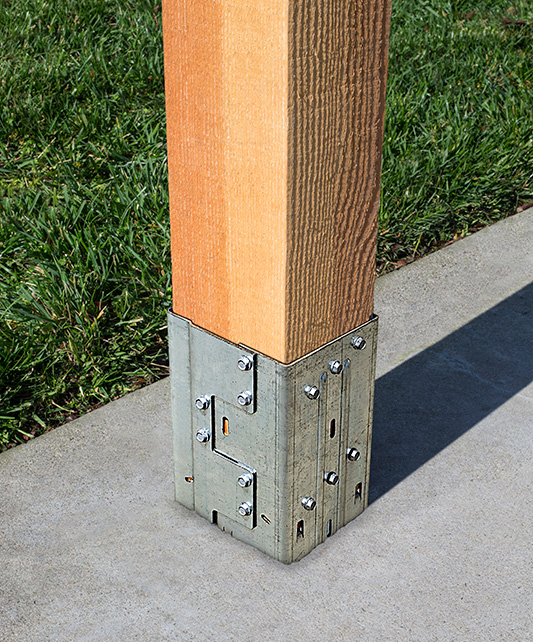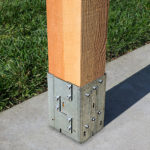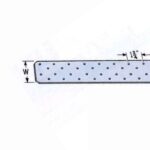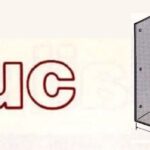This week’s post was written by Jhalak Vasavada, Research & Development Engineer at Simpson Strong-Tie.
This past December, Simpson Strong-Tie hosted an interactive webinar in which product manager Emmet Mielbrecht and I discussed the development, testing, evaluation and applications of our new moment-resisting MPBZ moment post base. During the one-hour webinar, we explained the testing and evaluation criteria for new product development, test procedures, installation recommendations, allowable loads and the rotational stiffness of the connection. We also included a design example. In case you missed the discussion, you can watch the on-demand webinar and earn PDH and CEU credits here.
As part of the live webinar in December, Emmet and I led a lively Q&A session with the attendees. What follows is a curated selection of those questions and answers. Click here for more answers to participant questions.
What is the most common ultimate failure mode?
It is concrete breakout.
How is wood shrinkage addressed?
We have evaluated wood shrinkage by testing, however, it is in review with ICC-ES. Additional information shall be made available upon approval from ICC-ES.
What was the actual strength of the concrete being used in the test (not the design value)?
It was 2500 psi, +/- 10 percent.
Breakout/pryout failure seems to govern allowable loads. Are there plans to test connection with adequate reinforcement to ignore breakout failure and achieve higher allowable moment loads?
Based on the overwhelming requests for higher loads we will be testing MPBX for:
- Higher strength concrete
- Reinforced concrete
- Greater edge distances
Given overlap of steel, is one direction stronger than the other and Simpson uses the weak direction for tbl?
Yes, one direction is stronger than the other and the weak direction allowable loads are listed.
Technically, the stand-off tabs and side friction will also aid in the vertical load transfer, just extremely minimal.
Correct. Our tested loads are actually higher than the screw calculations. The code requires we use the lower of the two loads, so we use the SDS screws calculated capacity only.
Why is the 4×4 stiffer than 6×6?
The stiffness in the graphs is relative to the stiffness of the post. The 6×6 post is much stiffer, so the post base is less stiff as a percentage of the 6×6 post stiffness. The actual stiffness of the MPB66Z is stiffer than the MPB44Z.
Why a F1 value for wood? And you can use the higher wood values with a proper concrete design?
The F1 values listed in the allowable load tables are the lowest of concrete and wood assembly allowable loads.
Why aren’t uplift loads for the wood connection published?
The uplift loads are limited by the lesser of the wood or concrete capacity. We lumped those together under the concrete. This will be clarified in future publications.
Relative to deflection associated with rotation at the base is that considered elastic? In other words, when the load is removed will the deflection return to zero?
Yes. Deflection associated with rotation at the base due to applied loads within allowable load range is considered elastic.
Ready to learn more about MPBZ moment post base? See the rest of the Q&A questions here and you can watch the on-demand webinar and earn PDH and CEU credits here.








